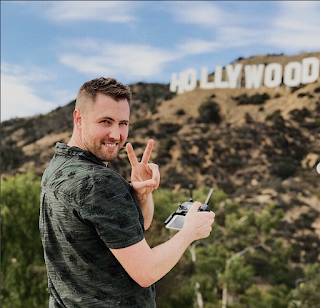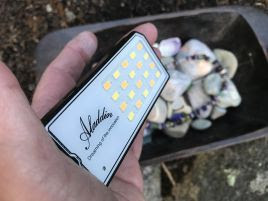 George Burt is a Feature Film Director of Photography who works primarily in Horror films. However, George was the DOP for the BBC 3 Documentary Tulisa, The Price of Fame back in 2014. George has won many awards for his work in Cinematography and I was fortunate enough to be a Camera Trainee under him for a short film back in 2016. I've previously written up a short interview with George for my Transitions Unit.
George Burt is a Feature Film Director of Photography who works primarily in Horror films. However, George was the DOP for the BBC 3 Documentary Tulisa, The Price of Fame back in 2014. George has won many awards for his work in Cinematography and I was fortunate enough to be a Camera Trainee under him for a short film back in 2016. I've previously written up a short interview with George for my Transitions Unit.Through all my interviews with DOP's, I've constantly asked how to set up interviews, shoot a documentary and working with cameras but I haven't asked much about lighting. So this was my main question for George which was how do you light a documentary?
"That's like asking how do you write a script? It all depends on the story and structure. There's no one way to do this" (George Burt) George explained to me that lighting is an art, as a DOP you are in charge of bringing the Directors vision to life through camera and lighting. George said lighting is so important in narrative films but in documentaries this isn't always the case.
"Documentary crews could be as big as 20, with a Director, DOP, Lighting Director, Sound Operator, 1st AD and Producer all on set. But it can also be as small as one person being the Director, Producer, DOP, Sound and Lighting all in one. This is where you need to consider what's possible with the size of the crew and of course the budget" (George Burt)
 George explained that documentaries can often use natural lighting as you're filming actuality. You aren't making beautiful films you're filming real people in real life. He went on to say if you're in a really dark room or location then you'll obviously need to bring lights in but before then you can simply have a small LED in your back pocket. George showed me a small LED called Aladdin Eye Lite (picture to the right) which is smaller than my hand but he explained it's very bright and a handy little light to have in your back pocket to add in some extra light to interviews to add in the detail on the face.
George explained that documentaries can often use natural lighting as you're filming actuality. You aren't making beautiful films you're filming real people in real life. He went on to say if you're in a really dark room or location then you'll obviously need to bring lights in but before then you can simply have a small LED in your back pocket. George showed me a small LED called Aladdin Eye Lite (picture to the right) which is smaller than my hand but he explained it's very bright and a handy little light to have in your back pocket to add in some extra light to interviews to add in the detail on the face.
George did go on to explain that your interviews need to be shot and lit nicely as these are where you'll get the information off the contributors. He explained that often 3 point lighting is a classic style to set up interviews but you can easily do it with 1 or 2. One source light with a diffuser on the subject is an easy but effective interview light set up but George explained if you add a fill light in the background it'l' give you the detail behind the subject.
No comments:
Post a Comment